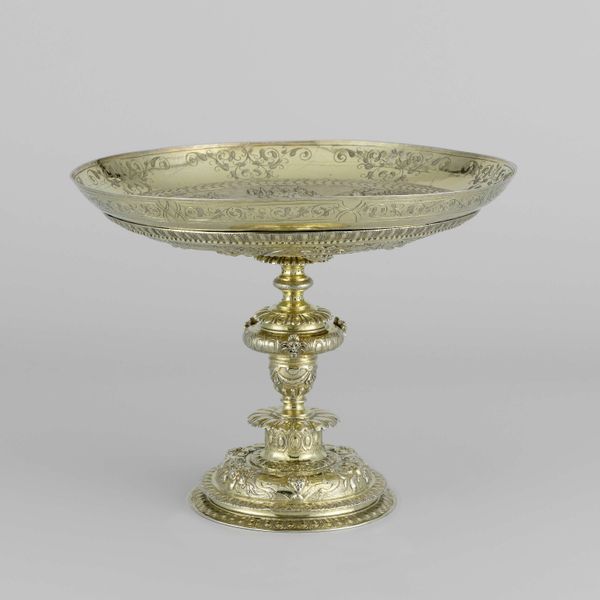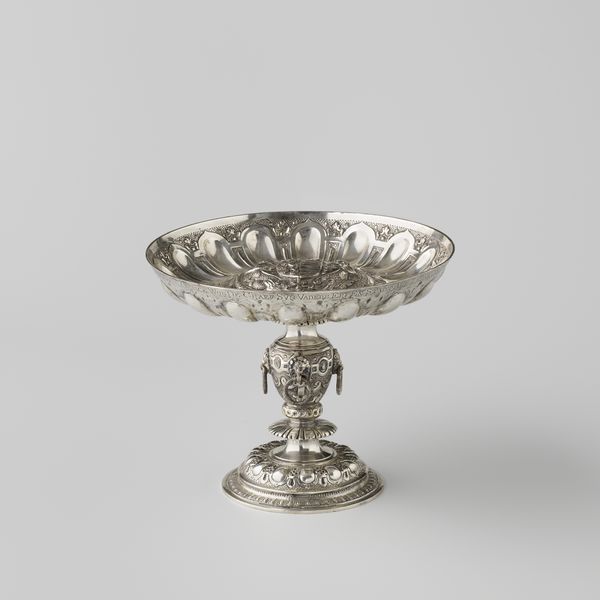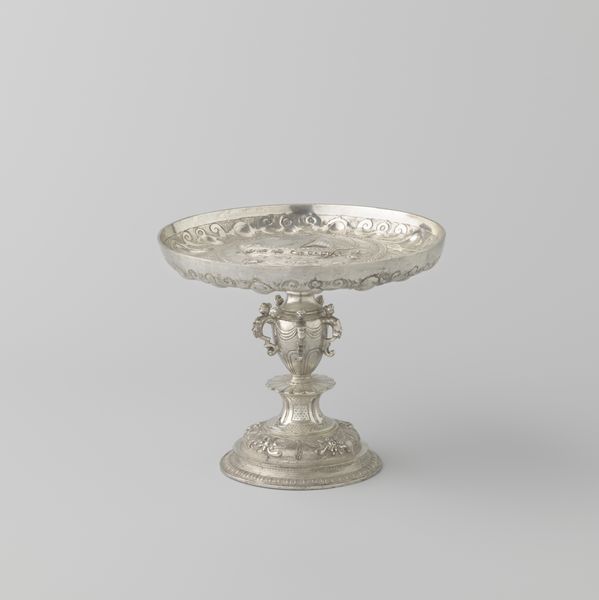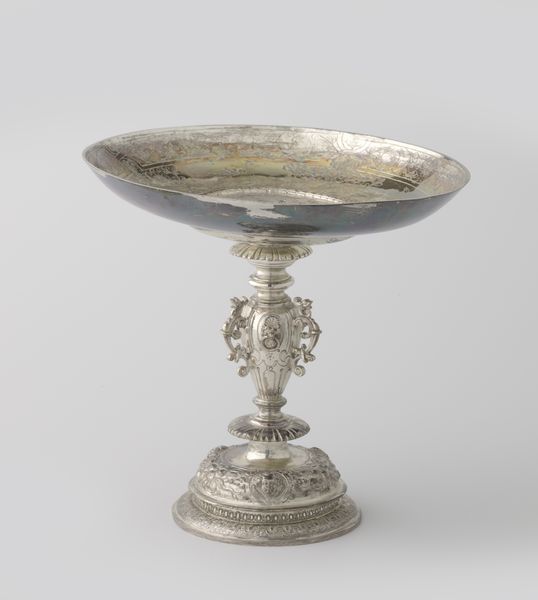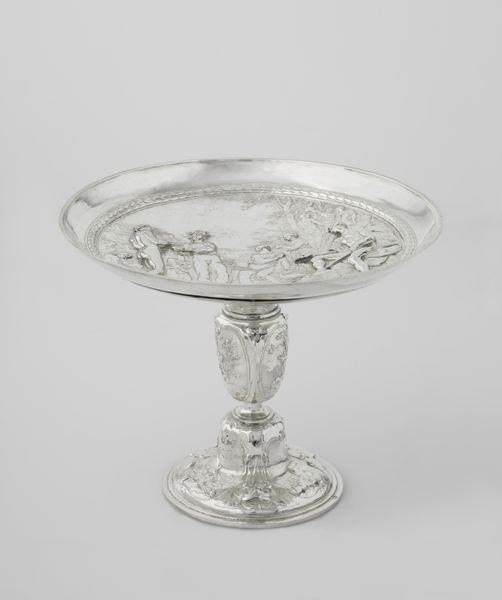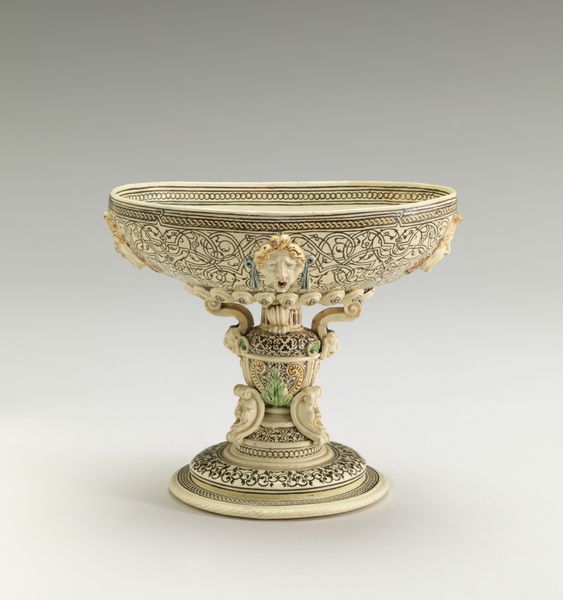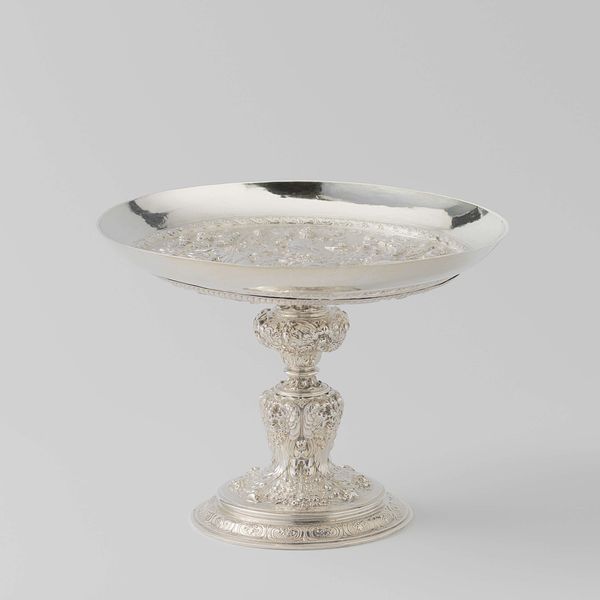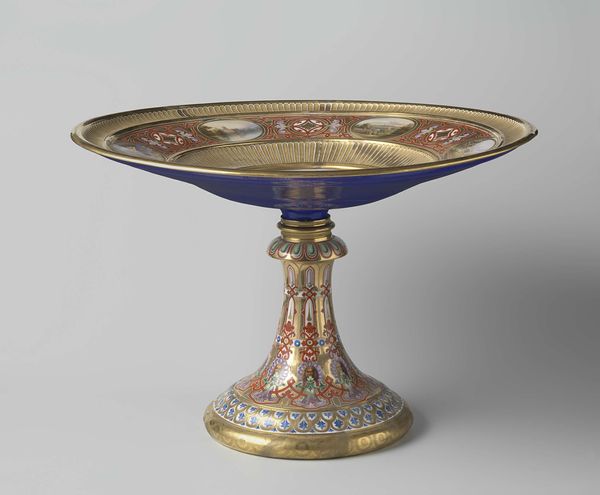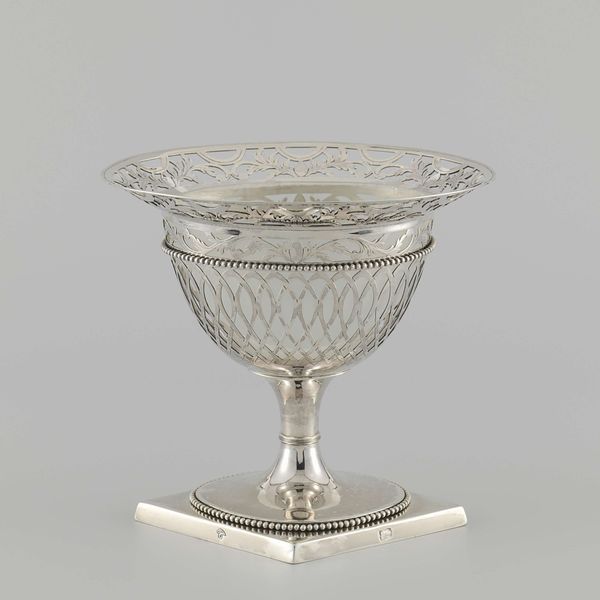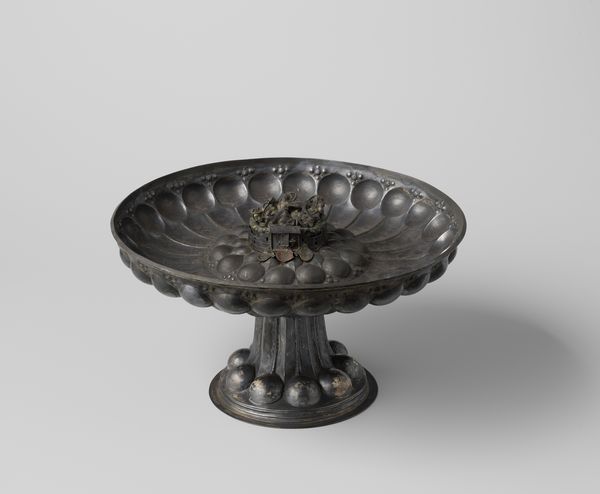
Galvanoplastische reproductie van een tazza met voorstelling van de hoofddeugden before 1880
0:00
0:00
brass, silver, metal, sculpture
#
brass
#
silver
#
rounded shape
#
metal
#
11_renaissance
#
sculpture
#
decorative-art
Dimensions: height 19.0 cm, diameter 22.0 cm
Copyright: Rijks Museum: Open Domain
Curator: Before us is a striking piece entitled "Galvanoplastische reproductie van een tazza met voorstelling van de hoofddeugden," or Galvanoplastic Reproduction of a Tazza with Representations of the Cardinal Virtues. Dating from before 1880, it’s currently housed here at the Rijksmuseum. Editor: Its ornate quality is the first thing to grab me. The bright silver set against the burnished gold provides a very satisfying visual tension. Curator: Indeed. The tazza, attributed to Elkington & Co., is a testament to the advancements in metalworking techniques during the 19th century. The term "galvanoplastic" itself points to a process involving electrodeposition to create such intricate detailing in both brass and silver. It truly marries artistry and industrial ingenuity. Editor: The question, then, is not merely of aesthetic pleasure, but also the implications for the labor process. What exactly went into reproducing a luxury item in this way? This technological approach certainly challenged the traditional craft guilds. Was this a process that threatened craftspeople at the time, perhaps democratizing access to items like this? Curator: Absolutely. The pursuit of verisimilitude would have driven Elkington & Co. Given the work presents the cardinal virtues—Prudence, Justice, Temperance, and Fortitude—as a celebration of ideal human qualities, this pursuit speaks to a certain kind of cultural project that wants its achievements to appear lasting. Editor: Given those aims, I find it ironic that these kinds of techniques were used to produce a *reproduction*—essentially, a copy! How does that reproduction speak to power and status in its time? Was the intent here to evoke Renaissance forms, to make that era accessible? Curator: Quite right. And by reinterpreting those earlier forms with this new process, it suggests the ability to improve or at least to perfect classical aesthetics via industrial methods. Editor: Interesting how production alters our reading, doesn't it? I'm struck now by how the gleaming surfaces almost belie the complexities of both the material's making and the piece's subject matter. Curator: I agree. Contemplating the tazza brings awareness of the dialogue between classical ideals and Victorian innovation, reminding us how deeply intertwined artistic aspirations and material processes really are. Editor: Yes, precisely. We often speak of virtues in abstract terms, and here, the tazza demands we contemplate the brass and silver necessary to imagine that abstraction in the first place.
Comments
No comments
Be the first to comment and join the conversation on the ultimate creative platform.
